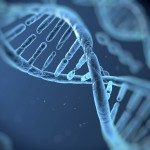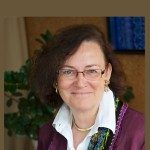Présentation
Human and mouse hereditary deafness Severe to profound deafness affects one in 700 newborns. This disability also affects an additional one child in 1000 before adulthood, and 2.3% of the general population between 60 and 70. Moreover, 40% of people over 65 suffer from hearing loss, which impedes conversational exchange. Of note, about 10% of children affected by severe to profound congenital deafness suffer from Usher syndrome type I. Our laboratory has overcome many of the difficulties encountered by linkage analysis for deafness by studying large consanguineous deaf families living in distinct geographic regions of several countries bordering the Mediterranean Sea, including Tunisia, Lebanon and Jordan. We have a long-standing experience in the search for genes associated with deafness. Indeed, we identified the first causative gene for an olfactory defect (Kallmann’s syndrome) andhave combined candidate gene approaches with linkage analysis to identify more than 20 causative genes for hearing impairment. These analyses have shown that the vast majority of cases of severe to profound congenital deafness are hereditary. A defect in connexin-26 (DFNB1) accounts for one third to half of cases in our cohort of families from countries bordering the Mediterranean Sea. We are continuing the search for genes responsible for early onset forms of deafness, and are pursuing and extending our collaboration with scientists and physicians in North African countries. In addition, we have broadened our search to genes responsible for late-onset sensorineural deafness (presbycusis). From genes to the molecular physiology of hearing All genes that we have identified as associated with deafness, except for the gene encoding pejvakin which is responsible for DFNB59, lead to a primary deficit in the peripheral auditory sensory system. An in-depth study of mice deficient in these genes has revealed that their inactivation leads to a variety of defective processes or structures including: (i) the hair bundle, the mechanoreceptive structure of the hair cells to sound, which performs auditory MET; (ii) the tectorial membrane, which is directly involved in the shearing motion of the hair bundle induced by sound; (iii) the inner hair cell ribbon synapse; and (iv) cochlear ionic homeostasis, in particular involving the stria vascularis. Notably, the lab has shown that several forms of deafness including Usher syndrome are causing defects of hair bundle links. With the exception of the tip-link (a single link, central to the MET machinery), the function of these links was unknown. Our work has enabled both the molecular composition and function of these links to be deciphered. Embryonic transient lateral links are composed of proteins encoded by the Usher syndrome type 1 genes and are involved in early hair bundle cohesion and orientation. Ankle links are early lateral transient links composed of proteins encoded by the Usher syndrome type 2 genes and play a role in hair bundle functional polarity. Finally, the mature outer hair cells links, termed the top connectors, are composed of stereocilin, which is encoded by the DFNB16 gene, and are involved in acoustic distortions and suppressive masking. Moreover, we showed that the five proteins encoded by the genes responsible for Usher syndrome type1 (myosin VIIA, harmonin, cadherin23, protocadherin15 and sans) form a molecular network that creates embryonic lateral transient links and anchors them to the actin filaments of stereocilia of the hair bundle. Four of these proteins also belong to the auditory mechanoelectrical transduction machinery (protocadherin15 CD2, sans, harmoninb and myosin VIIA). In addition, the Usher 1 protein complex is also associated with calyceal processes of primate photoreceptor cells which are microvilli structures showing similarities with the stereocilia of the hair bundle. Current research interests of the lab We are interested in the molecular composition, interactions, 3D structure and the structure/function relationship of the hair bundle links during early development and in adults, as well as the structure/function relationship of the mechanotransduction machinery. This research is supported by a grant from the European Research Council “HAIRBUNDLE”. We also address the molecular physiology of the inner hair cell synapse (synaptic trafficking and exocytosis) and that of spiral ganglion neurons. We apply an interdisciplinary approach to solve these issues, involving biophysics, electrophysiology (recordings of mechanotransduction, capacitance measurements, in vivo electrophysiology of the auditory central nervous system), biochemistry, imaging (electron microscopy, confocal and biphoton analyses), cell biology, genetics and molecular genetics. Our interests are also currently extending to the cellular and molecular physiology of the central auditory system and the genetic basis of presbycusis. New avenues of therapeutic research in our laboratory will explore ways to prevent the occurrence or slow down the progression of late-onset forms of deafness, and impede the development of retinitis pigmentosa in Usher syndrome.

